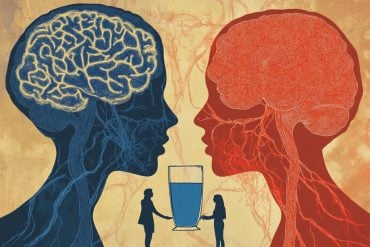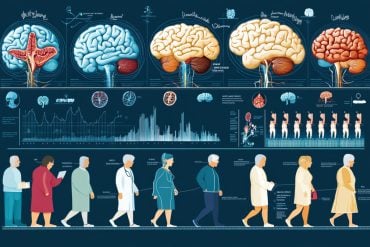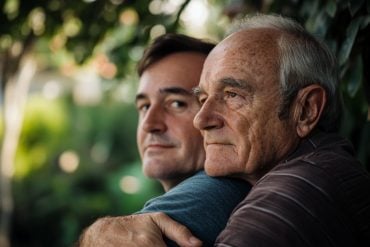Summary: The benefits of endurance exercise can vary based on the mutation types associated with primary mitochondrial disease, a new study reports.
Source: CHOP
Mitochondria serve as the main source of energy production in our cells, and endurance exercise is generally known to improve the function of mitochondria. However, the benefits of exercise in patients with primary mitochondrial diseases, which are heterogeneous and caused by a variety of genetic mutations, were largely unknown.
In a new study, researchers at Children’s Hospital of Philadelphia (CHOP) demonstrated that the benefits of endurance exercise can vary based on the type of mutation involved in mitochondrial disease, and while the benefits of exercise outweigh the risks, the mitochondrial genetic status of patients should be taken into consideration when recommending exercise as therapy.
The findings were published online today by the Proceedings of the National Academy of Sciences.
Primary mitochondrial diseases represent the most prevalent inherited metabolic disorders, affecting approximately 1 in every 4,200 people. These disorders can be caused by hundreds of different mutations in the nuclear DNA (DNA within our cells) or mitochondrial DNA (mtDNA, or the DNA within the mitochondria within our cells).
Universal treatments for these patients are limited. However, endurance exercise has been shown to improve mitochondrial function in healthy people and reduce the risk of developing secondary metabolic disorders like diabetes or neurodegenerative disorders.
However, these recommendations were based on healthy people without primary mitochondrial disease. Therefore, researchers wanted to determine effectiveness for these patients and whether they are actually benefitting from endurance exercise.
“There was not a consensus among clinicians who see patients with mitochondrial disease whether endurance exercise truly offers benefits,” said Patrick Schaefer, Ph.D., a postdoctoral fellow at the Center for Mitochondrial and Epigenomic Medicine at CHOP and first author of the study.
“Exercise helps create more mitochondria, but if those mitochondria still have the mutations associated with primary mitochondrial disease, there is a chance that exercise may put some patients at risk.”
Because of the heterogeneity of primary mitochondrial disease among patients, the researchers used animal models to study five mutations responsible for the disease.
The goal of the study was to determine the relationship between mitochondrial mutations, endurance exercise response, and the underlying molecular pathways in these models with distinct mitochondrial mutations.
The study found that endurance exercise had different impacts on the models depending on the mutation involved. Exercise improved response in the model with the mtDNA ND6 mutation in complex I.
The model with a CO1 mutation affecting complex IV showed significantly fewer positive effects related to exercise, and the model with a ND5 complex 1 mutation did not respond to exercise at all. In the model that was deficient in nuclear DNA Ant1, endurance exercise actually worsened cardiomyopathy.

Additionally, the researchers were able to correlate the gene expression profile of skeletal muscle and heart in the model with exercise response and identified oxidative phosphorylation, amino acid metabolism, and cell cycle regulation as key pathways in exercise response, suggesting how the model might be adapted to study exercise responses in humans with primary mitochondrial disease.
Despite mixed responses of the models used in this study, the authors note that the benefits of exercise outweigh the risks in most cases. However, the physical and mitochondrial status of the patient should be taken into account when recommending therapeutic exercises.
Additionally, the study could help researchers identify biomarkers and pathways to help predict the mitochondrial response to exercise both in mitochondrial patients and the healthy population harboring different mitochondrial haplogroups.
“This work is of fundamental importance in demonstrating that individuals with different mitochondrial bioenergetics will respond differently to endurance exercise,” said senior study author Douglas C. Wallace, Ph.D., director of the Center for Mitochondrial and Epigenomic Medicine at CHOP and the Michael and Charles Barnett Endowed Chair in Pediatric Mitochondrial Medicine and Metabolic Diseases.
“This is of broad relevance to individuals ranging from athletes to patients with mitochondrial disease, and everyone in between.”
About this genetics and exercise research news
Author: Press Office
Source: CHOP
Contact: Press Office – CHOP
Image: The image is in the public domain
Original Research: Closed access.
“Mitochondrial mutations alter endurance exercise response and determinants in mice” by Patrick M. Schaefer et al. PNAS
Abstract
Mitochondrial mutations alter endurance exercise response and determinants in mice
Primary mitochondrial diseases (PMDs) are a heterogeneous group of metabolic disorders that can be caused by hundreds of mutations in both mitochondrial DNA (mtDNA) and nuclear DNA (nDNA) genes. Current therapeutic approaches are limited, although one approach has been exercise training.
Endurance exercise is known to improve mitochondrial function in heathy subjects and reduce risk for secondary metabolic disorders such as diabetes or neurodegenerative disorders. However, in PMDs the benefit of endurance exercise is unclear, and exercise might be beneficial for some mitochondrial disorders but contraindicated in others.
Here we investigate the effect of an endurance exercise regimen in mouse models for PMDs harboring distinct mitochondrial mutations.
We show that while an mtDNA ND6 mutation in complex I demonstrated improvement in response to exercise, mice with a CO1 mutation affecting complex IV showed significantly fewer positive effects, and mice with an ND5 complex I mutation did not respond to exercise at all. For mice deficient in the nDNA adenine nucleotide translocase 1 (Ant1), endurance exercise actually worsened the dilated cardiomyopathy.
Correlating the gene expression profile of skeletal muscle and heart with the physiologic exercise response identified oxidative phosphorylation, amino acid metabolism, matrisome (extracellular matrix [ECM]) structure, and cell cycle regulation as key pathways in the exercise response. This emphasizes the crucial role of mitochondria in determining the exercise capacity and exercise response.
Consequently, the benefit of endurance exercise in PMDs strongly depends on the underlying mutation, although our results suggest a general beneficial effect.






